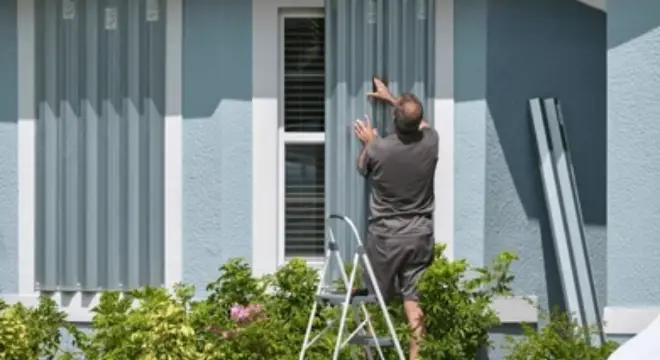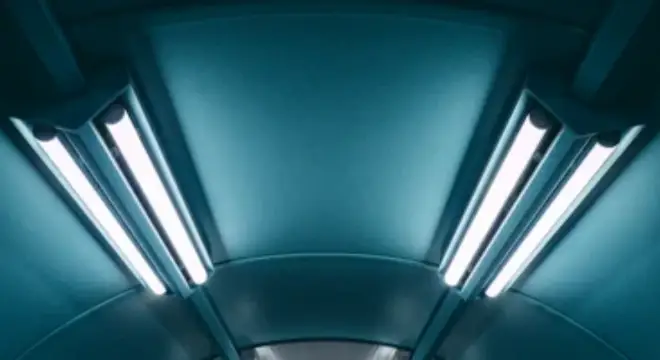Can Hurricane Screens Safeguard Windows from Tornadoes?
Are hurricane screens effective only against hurricanes, or do they also work against tornadoes?
Every year, millions of people face hurricanes and tornadoes, and they need the best protective measures to secure their homes. The primary purpose of hurricane screens is to protect homes from high winds and flying debris during hurricanes. However, are these screens equally effective against unpredictable and destructive events like tornadoes?
In this article, we will explore how reliable hurricane screens are against tornadoes and the potential benefits and drawbacks of using them.
Before we dive into this topic, we want to share a real-life incident that will make this discussion even more relevant. This incident involves a family living in Florida, where they took a protective step during a hurricane that turned out to be a disaster.
They covered their sliding glass door with cardboard and tape, thinking it would protect them from wind and flying debris. But when the first gust of wind from the hurricane arrived, the tape and cardboard blew off, leaving their protection completely ineffective.
This incident highlights how crucial it is to have proper protection, and how using the wrong methods can put you at risk. After this, we will explore how hurricane screens work and whether they are as effective against tornadoes.
Understanding Hurricane Screens
1. Design and Materials
- Purpose: Designed to protect homes from hurricane forces.
Materials Used
- Durable, high-strength materials like woven fabrics and metal meshes.
- Polyester or polypropylene fabrics for lightweight yet tough protection.
- Metal mesh for strong, tear-resistant coverage.
Key Features
- Reinforced to withstand high winds and flying debris.
- Provides a balance of flexibility and strength, absorbing impacts effectively.
2. Intended Use
Primary Function: Protect windows and vulnerable areas during hurricanes.
How It Works
- Prevents debris propelled by hurricane winds from penetrating glass.
- Reduces wind pressure, minimizing the risk of windows shattering.
- Additional Benefits: Acts as a physical barrier, absorbing force and reducing exposure to dangerous debris and wind.
3. Effectiveness Against Tornadoes
- While highly effective for hurricanes, their reliability against tornadoes is less clear.
- Tornadoes bring unique challenges due to their unpredictability and higher wind speeds.
- This article will explore whether hurricane screens can provide similar protection in tornado scenarios.
Tornado Dynamics and Window Vulnerability
Wind Speeds
Tornadoes and hurricanes are both powerful storms, but their wind dynamics differ significantly:
- Hurricanes: Wind speeds generally range from 74 mph (Category 1) to 150 mph (Category 4-5). These winds cause widespread but relatively sustained damage over larger areas.
- Tornadoes: Wind speeds can exceed 200 mph, especially in EF4 or EF5 tornadoes, delivering intense destruction over a narrow path within minutes.
The extreme velocity of tornado winds creates significantly greater pressure on windows, making them vulnerable to shattering. Even hurricane-rated materials, designed for slower wind speeds, might struggle to withstand such intense forces.
Debris Impact
The types and behavior of debris in tornadoes are another critical factor:
- Hurricanes: Debris typically consists of loose, lightweight materials like tree branches, leaves, and small objects. While dangerous, their impact speed is generally lower.
- Tornadoes: Debris in tornadoes can include massive objects such as metal sheets, entire sections of buildings, and vehicles, propelled at extremely high speeds. This high-velocity debris can turn into lethal projectiles, capable of piercing even the strongest barriers.
The combination of higher speed and heavier debris makes tornadoes uniquely destructive, often overwhelming protections like hurricane screens that are not specifically designed for such conditions.
Evaluating Hurricane Screens Against Tornadoes
Protective Capacity
- Durability Against Winds: Hurricane screens are engineered to handle wind speeds of up to 150 mph, making them highly effective for hurricanes. However, tornadoes often generate winds exceeding 200 mph, putting extreme stress on these materials.
- Debris Resistance: These screens are designed to absorb the impact of debris typically found in hurricanes, such as tree branches or smaller objects. In a tornado, larger and faster-moving debris like metal shards or building fragments may exceed the screen’s capacity to resist penetration.
Limitations:
- Higher Wind Pressures: Tornadoes create localized and intense pressure differentials that can strain the structural integrity of hurricane screens. While they may delay damage, they are not guaranteed to prevent it under such extreme conditions.
- Larger Debris: Unlike hurricanes, tornadoes often hurl heavy and large objects at incredible speeds. Hurricane screens, though sturdy, are not specifically designed to withstand impacts from such massive debris.
- Unpredictability of Tornado Paths: Tornadoes can shift directions rapidly and bring stronger localized forces, which increases the likelihood of screen failure compared to hurricanes.

Alternative Window Protection for Tornadoes
Tornado-Resistant Windows
- Specialized Design: Tornado-resistant windows are built with advanced materials like laminated glass and reinforced frames to endure the intense wind speeds and debris impacts of tornadoes.
- FEMA P-361 Standards: These windows meet rigorous testing standards, including resistance to debris traveling at speeds of up to 100 mph. FEMA-certified tornado shelters often use these windows as part of their structural design.
- Enhanced Protection: Unlike hurricane screens, these windows can withstand both the wind pressure and high-velocity debris typically encountered during tornadoes, making them a reliable choice for at-risk areas.
Storm Shutters and Barriers
- Storm Shutters: Aluminum or steel storm shutters provide a solid layer of defense by physically covering the windows. These are designed to resist both hurricane and tornado forces when securely installed.
- Plywood Barriers: As an economical alternative, homeowners can install thick plywood boards over windows to minimize breakage. While not as durable as shutters, this method provides temporary protection.
- Security Window Films: Applied to glass, these films hold shattered pieces together, reducing the risk of flying shards. While they don’t prevent breakage, they reduce secondary hazards from broken glass.
FAQ: Hurricane Screens and Tornado Protection
1. What are hurricane screens, and how do they work?
Hurricane screens are protective barriers made from high-strength materials like woven fabrics or metal meshes. They are designed to shield windows and other vulnerable areas of a home during hurricanes by preventing flying debris from penetrating glass and reducing wind pressure.
2. Can hurricane screens protect against tornadoes?
While hurricane screens are effective against hurricane-force winds and debris, their ability to withstand tornado conditions, which often include wind speeds exceeding 200 mph and large debris impacts, is limited.
3. What are tornado-resistant windows?
Tornado-resistant windows are specially designed and tested to meet standards like FEMA P-361 or ICC 500. These windows can withstand extreme wind pressures and debris impacts typically associated with tornadoes.
4. Are storm shutters a good alternative to hurricane screens?
Yes, storm shutters made from durable materials like aluminum or steel can provide additional protection against both hurricanes and tornadoes. They are a reliable option for safeguarding windows from flying debris and wind damage.
5. What is the difference between hurricane wind speeds and tornado wind speeds?
Hurricane wind speeds generally reach up to 150 mph, while tornado wind speeds can exceed 200 mph, making them significantly more intense and destructive.
6. What additional protective measures can be used for windows in tornado-prone areas?
Options include tornado-resistant windows, heavy-duty storm shutters, reinforced plywood barriers, and security window films. Combining multiple measures offers the best protection.
7. Can I use plywood to protect my windows during a tornado?
Yes, plywood is a cost-effective option for temporary protection. However, it should be at least ¾-inch thick and securely fastened to the window frame to provide effective resistance against flying debris.
8. Do security window films protect against tornado damage?
Security window films can help minimize hazards from shattered glass but do not offer sufficient protection against high-velocity debris or extreme wind pressures.
9. Should I invest in a safe room for tornado protection?
Yes, a safe room built to FEMA standards with reinforced walls, doors, and windows offers the highest level of safety during a tornado.
10. How do I know if my home’s protective measures are effective?
Regular inspections by professionals, along with the use of certified protective products, can ensure your home is prepared to handle severe weather conditions effectively.
Conclusion
In this article, we explored the effectiveness of hurricane screens in protecting windows against tornadoes. While hurricane screens are excellent for withstanding hurricane winds and debris, their ability to protect against tornadoes is less reliable due to the higher wind speeds and more unpredictable nature of tornadoes. Tornado-resistant windows, storm shutters, and additional barriers are more effective for safeguarding windows during tornadoes.
Feel free to reach out if you have any more questions or need further advice on securing your home from severe weather.


